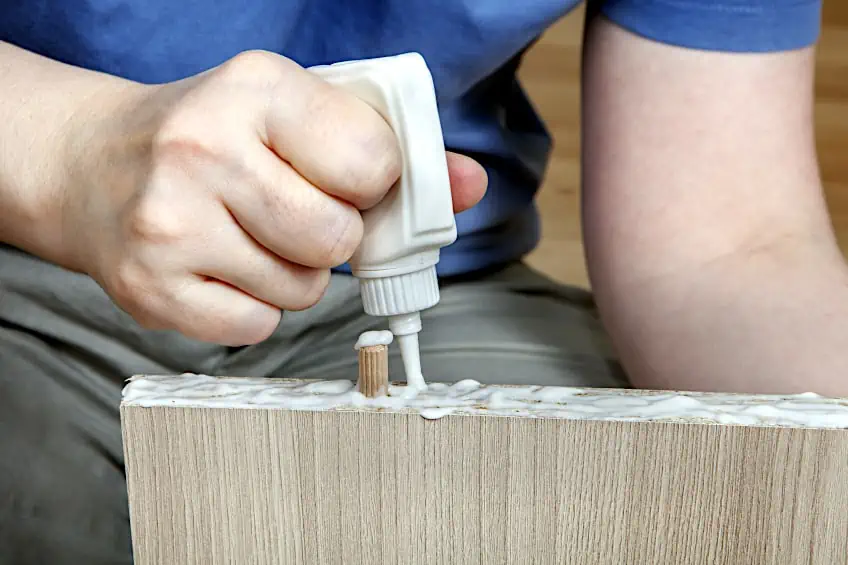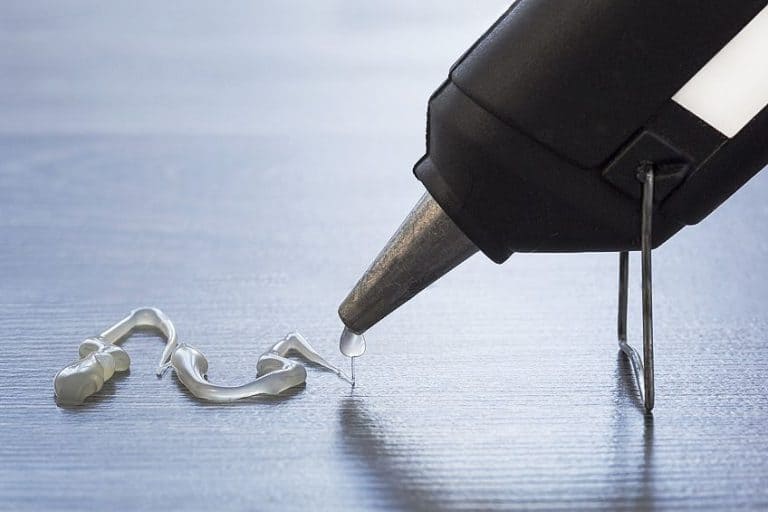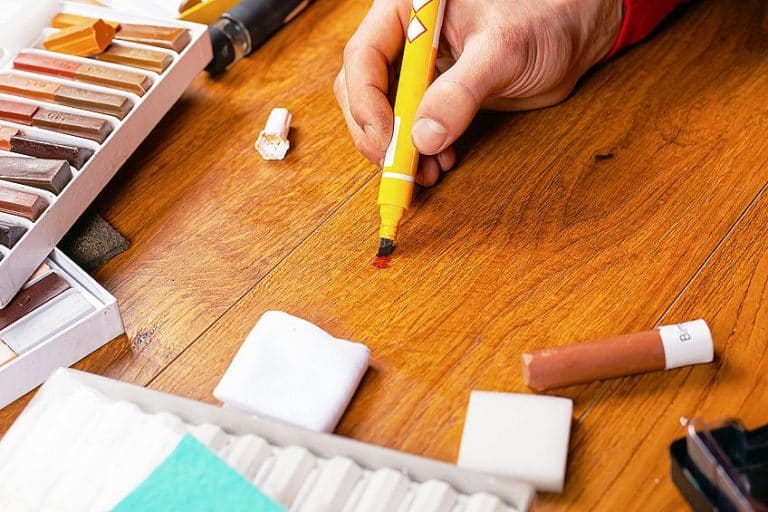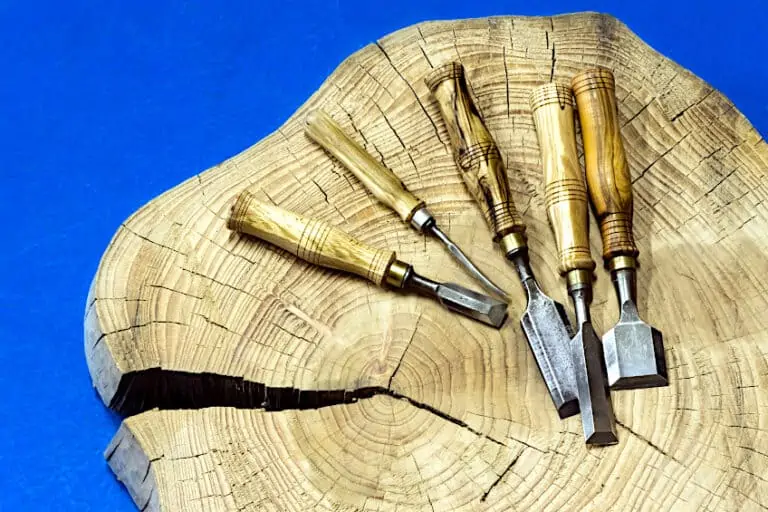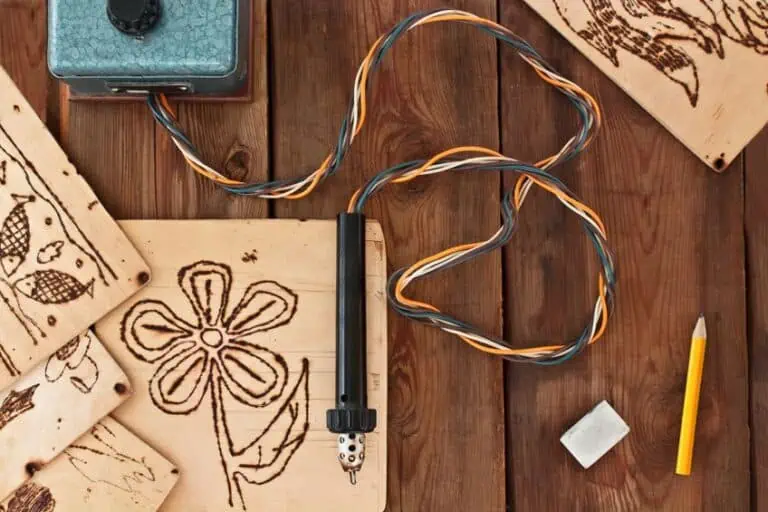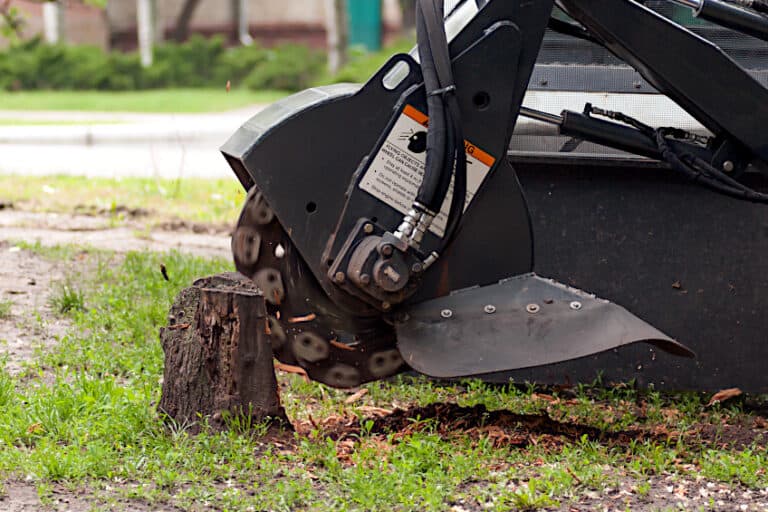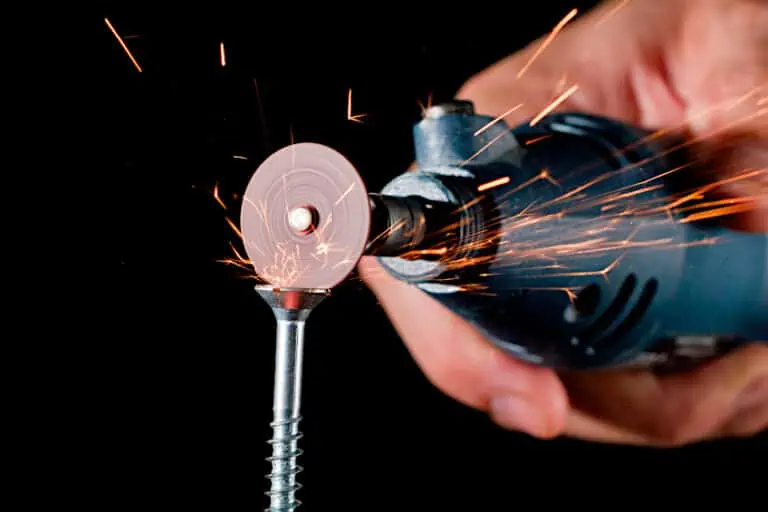What Is PVA Glue? – Guide to Polyvinyl Acetate Adhesives
You have undoubtedly heard about PVA adhesive, but it is likely by another name. Elmer’s glue, school glue, white glue, and wood glue are all different names for the same thing, and you have more than likely used it before. But what is PVA glue, and why is it such a popular option for home and professional adhesives? Find out everything you need to know about PVA wood glue, how it is used, where it came from, and much more.
Table of Contents
What Is PVA Glue?
Also known as polyvinyl acetate, this is an aliphatic synthetic polymer with rubbery properties and it was first discovered in 1912. PVA glue is a household staple to the common DIY enthusiast and it can be used on a broad range of practical and creative projects. This safe and cost-effective adhesive can be found at your local hardware store, supermarket, and art store.

Polyvinyl acetate is the key ingredient in most of the glues that we have mentioned, and it also allows you to use the glue for different purposes such as a dust-proofing and bonding agent, a primer, and a high-performance sealer.
Apart from its versatility, PVA glue is also very easy to use and it is water-soluble, making it easy to clean. You can also use water as a thinner to create a less viscous glue for different types of projects.
Brief History of PVA Glue
PVA, or polyvinyl acetate was initially discovered in 1912 by German chemist Fritz Klatte. It was initially mass-produced by adding acetic acid to acetylene along with mercury salt. However, it is now made with the process of adding acetic acid to ethylene with palladium-catalyzed cross-coupling. This ensures that there is an individual reaction between carbon atoms.
Definition of PVA Glue
PVA glue can be viewed as an umbrella term that describes a family of different glues. This ranges from white glue to carpenter’s glue and everything in between. PVA glue is a water-based solution that expands the wood fibers. As the glue joint cures, the fibers become interconnected and shrink as the adhesive hardens.
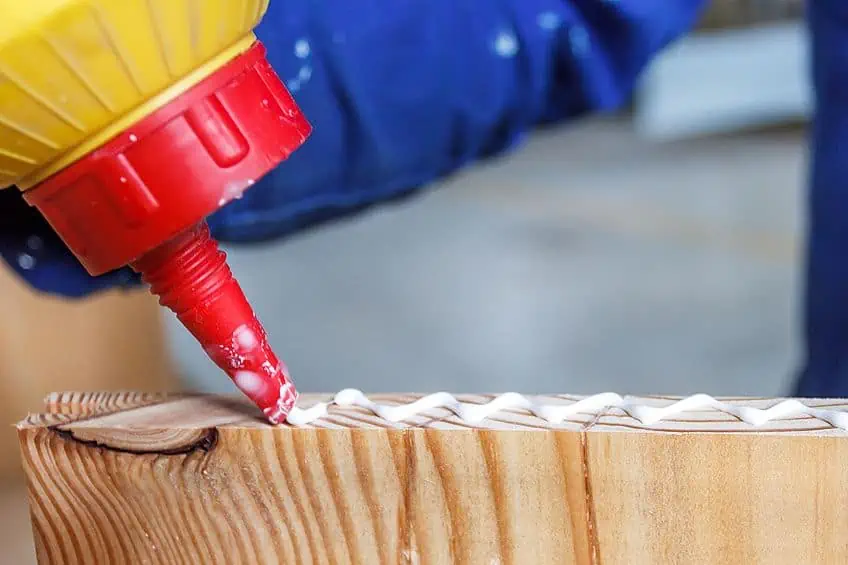
The joint should be tougher than the material itself if done correctly. This indicates that the wood near the glue joint is going to break prior to the glue junction itself. PVA glue has various drying times and this depends on the type of glue and the brand that you have chosen.
Types of PVA Glue
PVA glue can be split into two categories, namely craft and woodworking. You would not use school glue on a carpentry project. So, we have taken the liberty of explaining the distinctions between them and which of them you should pick for the projects in question below.
Craft Glue
This is the sort of glue you encountered in 3rd-grade art class, and it is often known as white glue. It is nearly always found in white, and it is extremely useful when dealing with paper. If you or your children are working on an art project that will require a lot of paper, perhaps this is the glue to use. There are other brands on the market, but Elmer remains a popular PVA craft glue brand.
One of the main advantages of white glue is that it is safe for children to use.
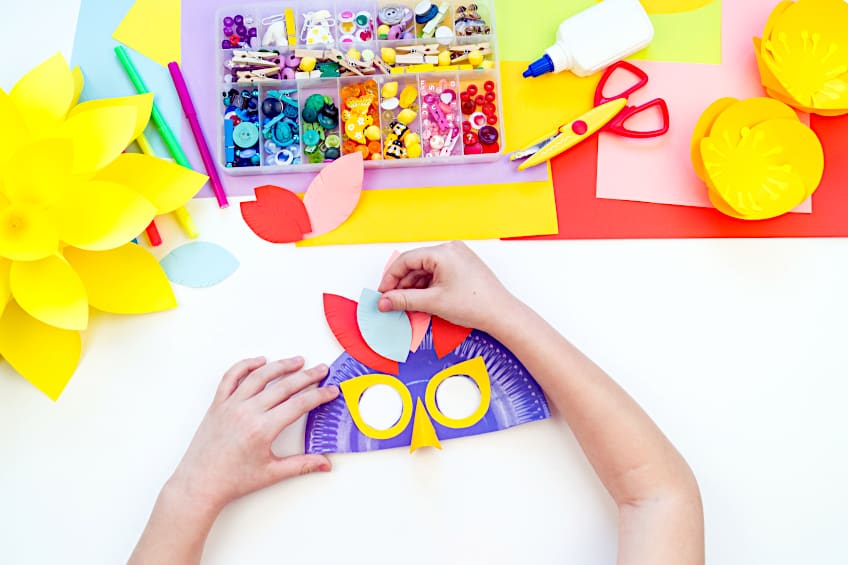
Woodworking Glue
This glue is designed particularly for sticking wood pieces together, as the name suggests. The most appealing aspect of this PVA glue, which is typically available in a brown or yellowish tone, is that its bonding power is virtually unrivaled for dealing with wood. While other varieties of PVA glue might potentially be used for working with wooden items, wood glue is preferred since it is so inexpensive and easy to buy. This type tends to last considerably longer than other kinds of PVA glue. Another significant advantage is that there are numerous water-resistant varieties of this sort of glue available.
In fact, some manufacturers claim their PVA wood glue is waterproof, which is ideal if you want to work on a piece of furniture that you can leave outdoors or something similar.
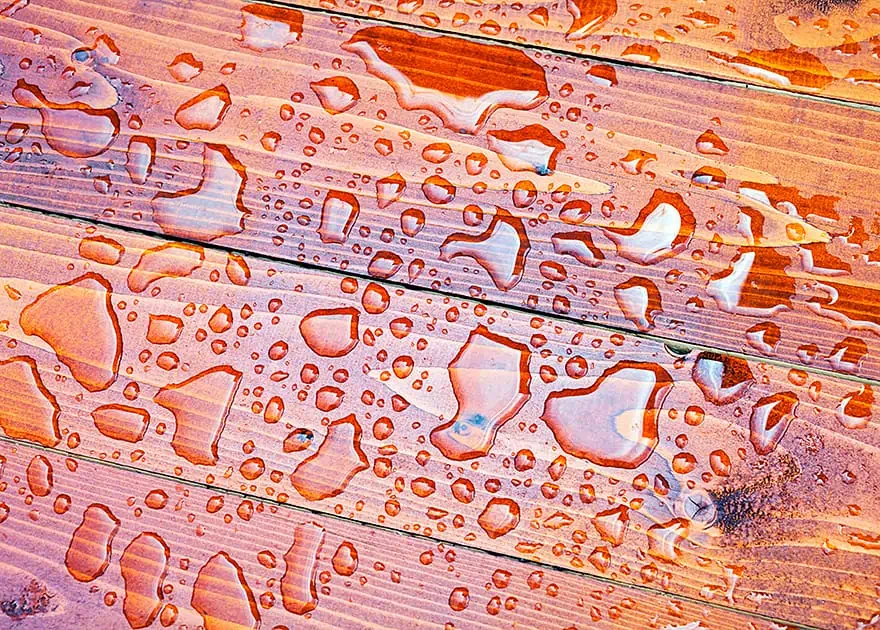
Key Ingredients of PVA Glue
Since you are asking, “what is PVA glue?”, it is important to understand the ingredients that are used in this product. Many of the chemicals used to produce synthetic PVA glue are petroleum-derived as well as plastic polymers. The petroleum business is exponentially damaging, and these substances can take a very long time to degrade. Scientists extract this chemical and then modify it to alter its structure.
Chemical Properties of PVA Glue
PVA glue is predominantly composed of aliphatic rubbery synthetic polymer. The chemical formula is (C4H6O2)n, so when it comes to production, PVA is typically produced by the free polymerization of radicals of synthetic vinyl acetate.
When monomer molecules of vinyl acetate are immersed in water, they normally react, producing a milky white emulsion. In most situations, the emulsion fluid may be treated quickly as a PVA polymer by separating it from the surrounding fluid and allowing it to settle at room temperature.
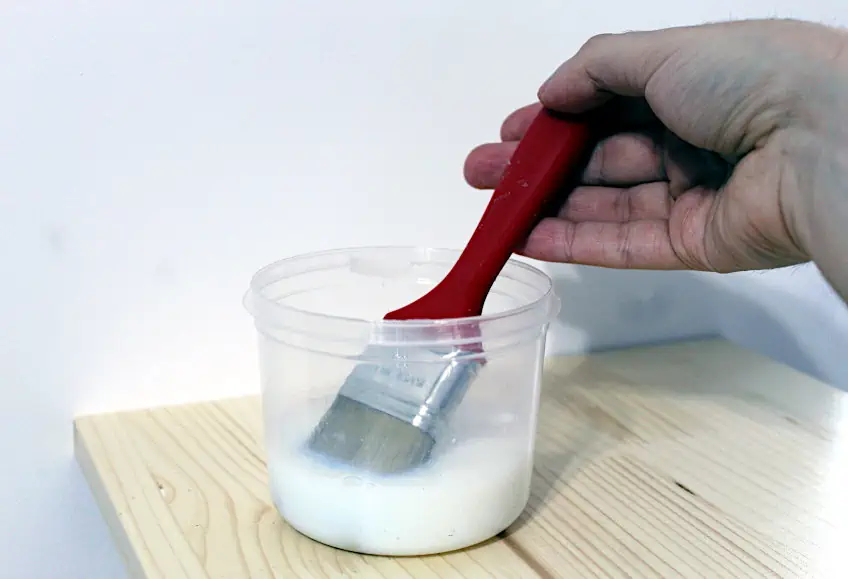
PVA Glue and the Environment
PVA glue is synthetic, as per the components, since it is created from byproducts of the petrochemical sector. However, it is completely sustainable for our environment, which means it is not harmful to our ecosystem.
PVA glue is biodegradable, meaning that natural microorganisms such as bacteria may break it down to generate water, natural gasses, and acetic acid.
PVA glue is safe for children and pets. It only starts to emit hazardous fumes when burned. So, when used appropriately, it serves as a safe adhesive that will not harm our environment.
Applications of PVA Glue
Asking what is PVA glue used for is a simple question when trying to figure out the best method of moving forward. As a water-soluble emulsion, it is particularly effective for gluing porous materials such as paper, wood, and different types of fabric.
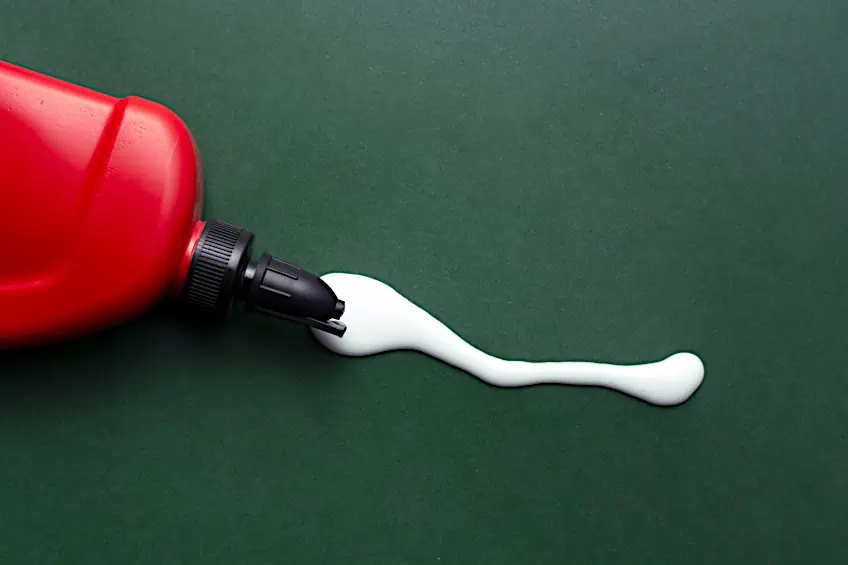
PVA glue contains no solvents and serves as a helpful adhesive agent for porous construction materials such as sandstone. It is flexible, provides an excellent bond, and is not acidic, unlike many polymers.
Below, we will take a closer look at the different uses of PVA glue with wood, paper, clothing, and various arts and crafts.
PVA Glue in Woodworking
Wood glue is used by woodworkers for a range of jobs such as furniture building, various wood repairs, cabinetmaking, and joinery. Additionally, you can create your own wood filler by combining carpenter’s glue and sawdust and applying it to cracks or gaps in wood. In reality, PVA glue does an excellent job and has become a mainstay in various woodworking workshops.
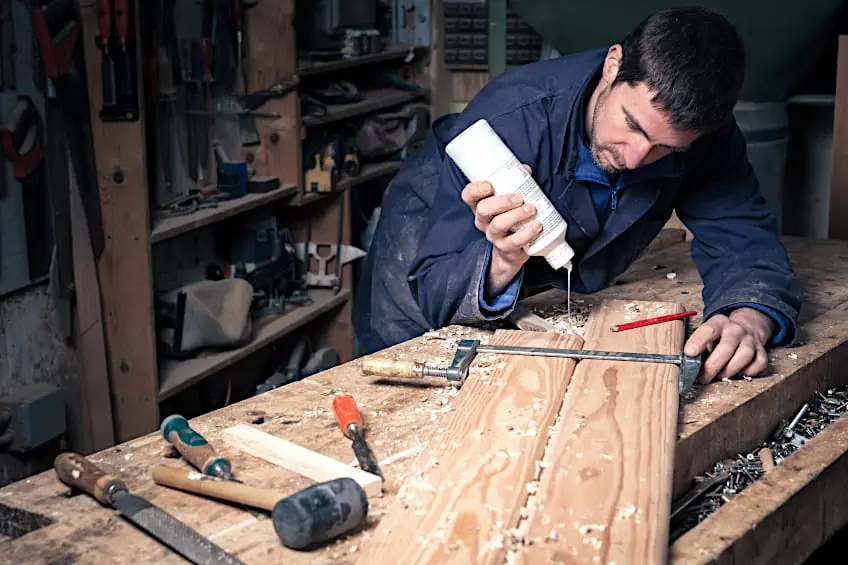
However, you could get away with using polyurethane or epoxy glues for wood joinery; however, these products are more expensive. If you want to use PVA glue to bond wood pieces together, you should know that the variety of PVA glue you choose will be determined by the type of job you do. For smaller chunks of wood, any sort of PVA glue will suffice.
However, if you intend to leave the wood outside where it can get wet, or if you are hoping to work with larger, heavier pieces, you may need to use wood glue, which is a type of PVA glue that holds materials better and for a longer period, and it is water-resistant.
PVA Glue in Paper and Cardboard Industries
PVA glue is used in a wide variety of paper, board, and card gluing operations. From the fabrication of corrugated cardboard to the laminating of printed papers and packaging supplies used for all sorts of consumer items, to the production of enormous industrial tubing and cores used by companies to create toilet paper, cling film, and aluminum foil.
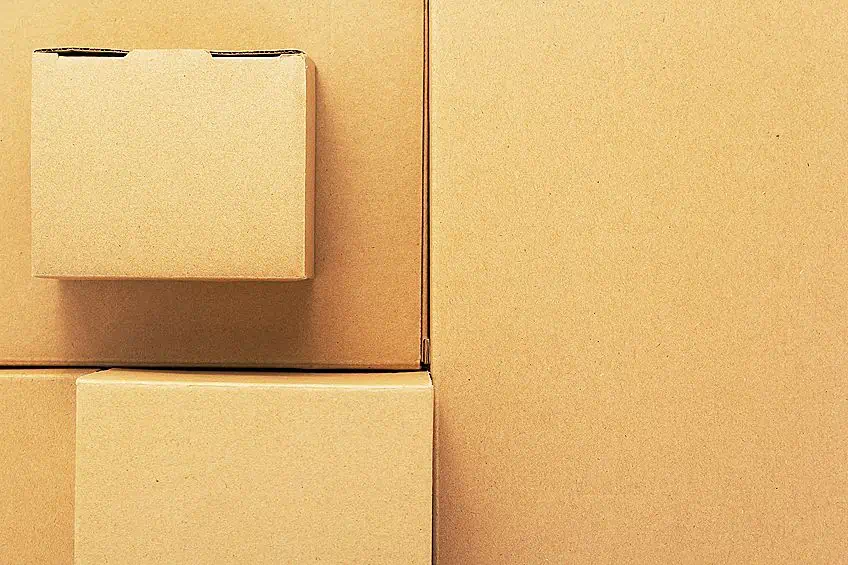
Why are glues commonly used in the packaging industry? One reason is that the water-based PVA glues used do not chemically destroy paper-based materials. These adhesives also have high adhering strengths and can be applied using a variety of ways. When it comes to the manufacturing process, the following areas generally require glue:
- Overprint packaging materials
- Flexible film lamination
- Laminating board with paper
- Decorative lamination
- Metallic foils
PVA Glue in the Textile and Clothing Industry
Since it is so versatile, PVA glue is an excellent choice for fabrics. It can be used to join fabric pieces, to seal the edges of a fabric project, or to cling fabric to a work surface. It cures clear and leaves no unattractive residue, making it an excellent choice for applications that require a tidy and polished appearance. When applying PVA glue to cloth, bear in mind that it might take a while for it to set entirely.
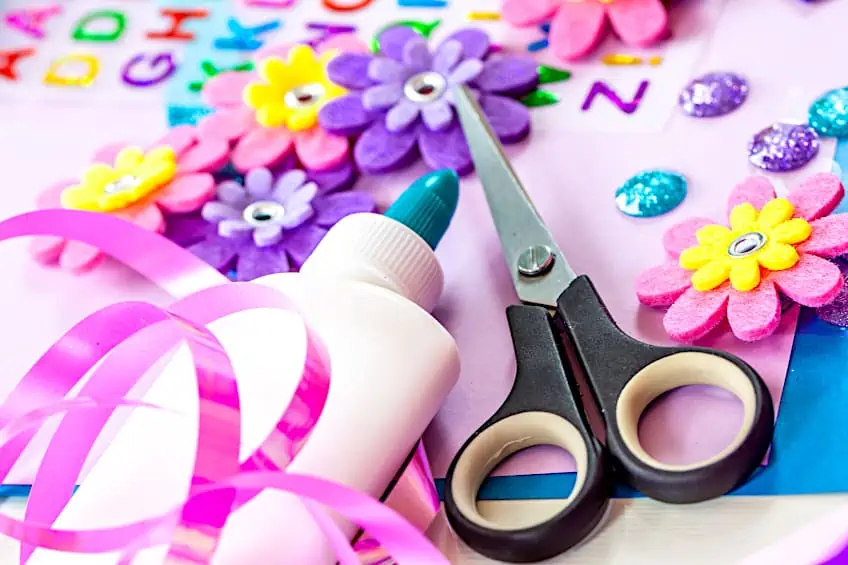
It may be used on any materials, including silk and cotton, without causing any issues or causing damage to any material, provided that you do not use too much. Nevertheless, because of its chemical makeup, it should not be used on leather since it may gradually cause discoloration if kept in direct sunlight, thus we suggest using an alternate form of adhesive such as iron-on interfacing instead.
There are multiple advantages to using PVA glue on textiles and fabric. This includes the price, ease of use, strength, and so on. Nevertheless, we would recommend sticking to using the needle and thread for permanent fabric bonds.
PVA Glue in Bookbinding and Arts and Crafts
Bookbinding is another popular application for PVA glue. If you are unfamiliar with the term, it is used to describe the process of putting together a book utilizing various components such as the book cover, paper, and glue. PVA glue is so widely used for this reason that numerous manufacturers have developed specialized adhesives for it.
PVA glue is an excellent choice for bookbinding since it does not cure as fast as other types of glue and is much easier to apply, which cannot be stated for other forms of glue.
PVA is also highly flexible, meaning that it is less likely to crack and flake when subjected to stress and bending. Since it is so versatile, PVA glue is also frequently used for this purpose. This is due to the fact that it may be blended with other chemicals to extend its already extended drying period, which is ideal for flawless paper alignment. Some bookbinders even get experimental with it, blending it with coloring paints for a unique look that pairs nicely with the paper being adhered to.
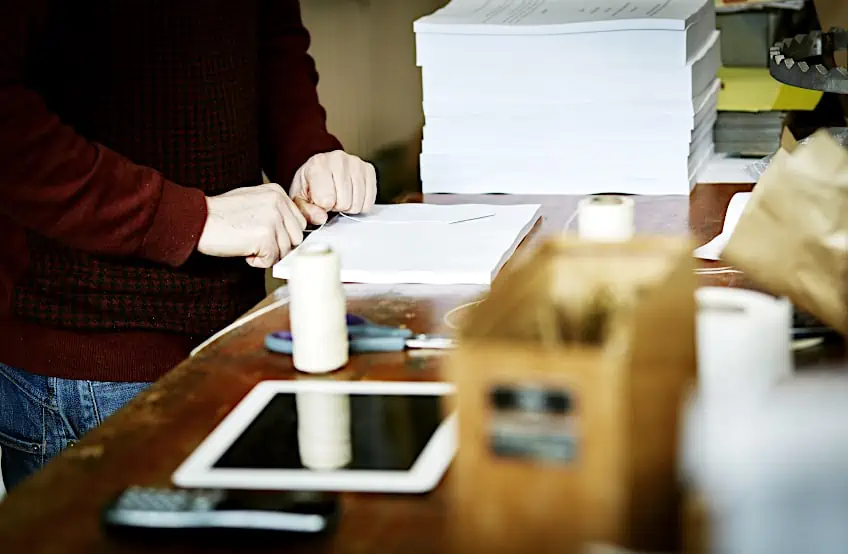
PVA glue is the undisputed king of art activities. This sort of adhesive is utilized by almost everyone interested in crafts, from kids in kindergarten using Elmer’s glue in the art room to enthusiasts working on aviation models.
This comes down to one of the primary advantages of white glue being that it is non-toxic. Since many individuals work on art projects indoors, glue that emits harmful fumes is unacceptable. This type of glue is a good substitute since the odor it generates will not harm your body. Additionally, it is also a good alternative for children’s crafts because ingesting it will not harm their bodies.
Advantages and Disadvantages of PVA Glue
There is no such thing as the perfect product and just like other adhesives out there, PVA glue comes with different advantages and disadvantages. We will be taking a closer look at all of the advantages and disadvantages of white glue, carpenter’s glue, and PVA glue as a whole.
The main advantage of PVA glue is the fact that it is an aliphatic polymer. This means it does not emit any fumes when wet. Since the adhesive is also non-combustible, it is ideal for interior usage. Furthermore, if you happen to get it on your skin, it poses no danger, so if you want to work without gloves, keep this in mind.
Although PVA glue is somewhat thick, it may be diluted for easier application. This property increases the utility of PVA. Cleanup is simple since any excess or runny glue can be readily washed away with water for the very same reasons that make this adhesive dilutable. If you want to thicken the product, PVA glue may help you with that as well. You can create a thick filler by combining PVA glue and sawdust and applying it to cracks or gaps.
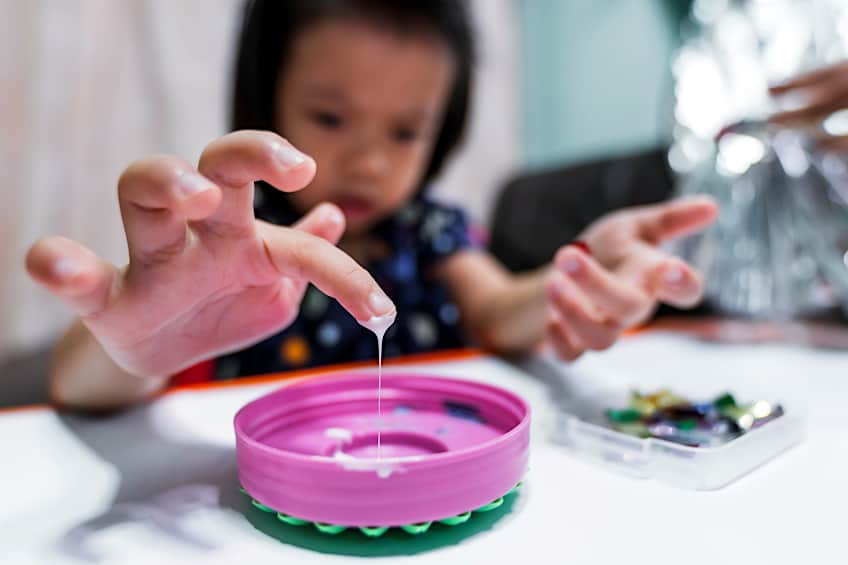
PVA glue, unlike epoxy glue, can only adhere to porous surfaces. Within reason, it performs well at its specialized purpose, but if you are searching for a glue that can handle everything, you might want to keep exploring. We urge you to keep in mind that any workpieces you are gluing together must remain bound with clamps until the glue has fully cured. You cannot rely on the glue to maintain its form until it is completely dry.
Tips for Using PVA Glue
There are a variety of tips that come with using PVA glue. Fortunately, this adhesive is very easy to use and there is not much to it as long as you remember what it sticks to. We have taken the liberty of providing you with some of the best tips for using PVA glue.
How to Properly Use PVA Glue
One of the major disadvantages of white glue is that you will not be able to use it for bigger projects that involve heavier materials such as wood. However, as we have mentioned before, PVA glue is an umbrella term that is used to describe different types of adhesives that are manufactured with polyvinyl acetate – in case you are asking, “what does PVA stand for in glue?” When it comes to the correct use of PVA glue, you need to consider the material that you are working with. For heavier materials, it is important to use wood glue and you will need to ensure that the wood is clamped to ensure that the adhesive is able to cure properly.
The curing process usually takes around 24 hours, but there is no harm in letting it cure for a bit longer and then sanding off the excess glue.
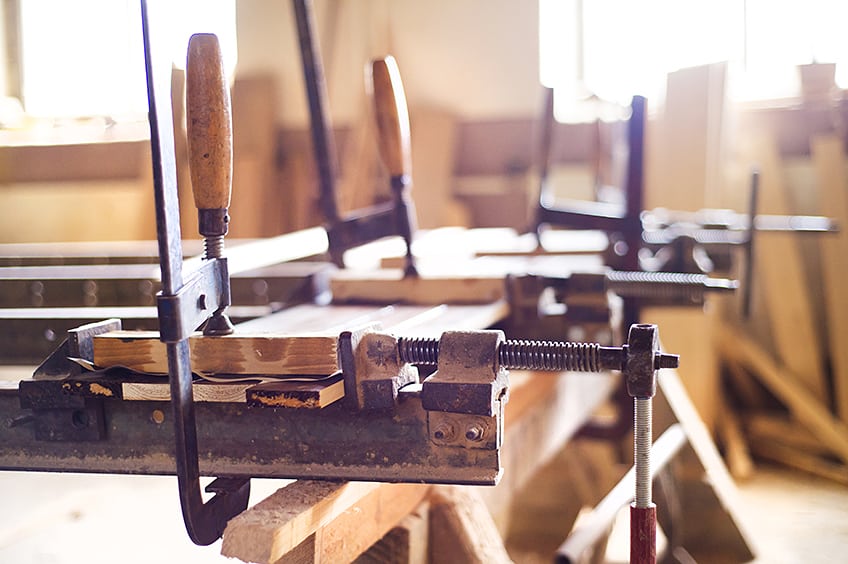
Using Yellow PVA Glue
Yellow glue is just as easy to apply as white glue. The distinction is that for the greatest results, wood glue or carpenter’s glue should be clamped. If your creation will be used outside, make sure you choose a water-resistant adhesive. Drop a few beads of yellow glue onto one of the surfaces of the wood that will be joined. Apply a thin coat of glue across the surface with your finger or a glue brush. Push the parts together gently, moving the surfaces around to remove any air that remains, and uniformly spread the glue on both sides. Clamp the parts together as the glue cures.
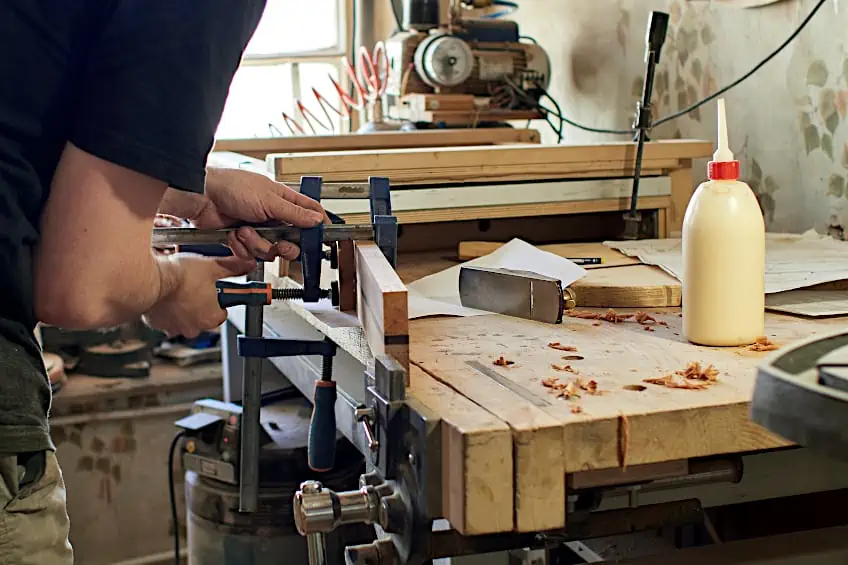
Remember to wipe off any glue that has seeped out of the joint after about 30 minutes.
How to Store PVA Glue
The majority of adhesives will have an expiration date stamped on the bottle, but this is mainly to protect the brand against those who have chosen to use the incorrect storage methods. Adhesives can generally be stored from one to two years, but many PVA glues have exceeded their shelf lives. Of course, the most basic lesson is to keep the cap on your glue as exposure to air will cause it to dry.
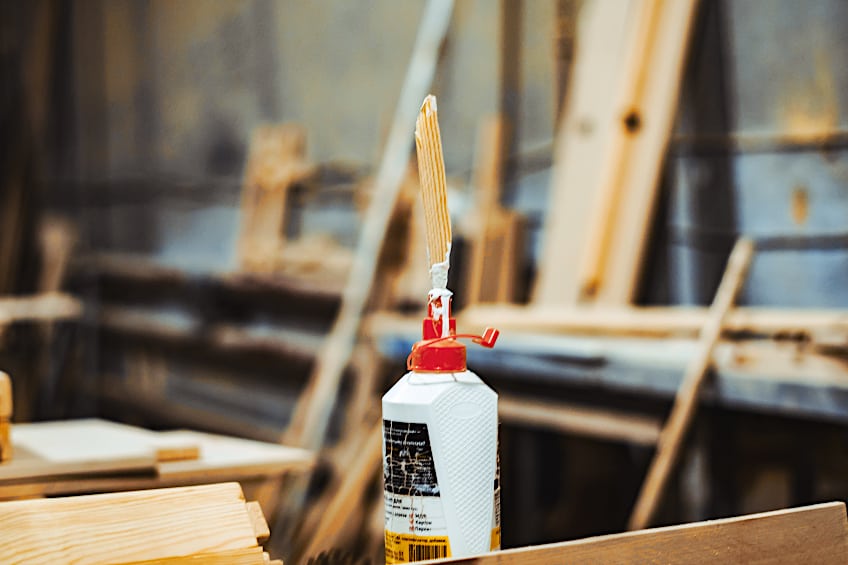
It is best to store PVA glue in conditions that avoid extreme heat and cold cycles. This means that room temperature is generally optimal and this will prevent the glue from hardening.
The best way to determine if the glue is still usable is to check if you are able to pour it. If you are unsure of how to store the glue, then it would be best to take a look at the manufacturer’s storage guidelines.
Safety Precautions When Using PVA Glue
Irrespective of the brand of PVA glue that you have chosen, you will easily be able to find a safety data sheet that will give you all of the information that is needed when using the product. This includes the identification of the substance, the composition, hazard identification, first aid measures, and so on. Most of them will tell you the same thing when it comes to safety.
You will need to ensure that you avoid contact with your skin and eyes while only using the product in an adequately ventilated area.
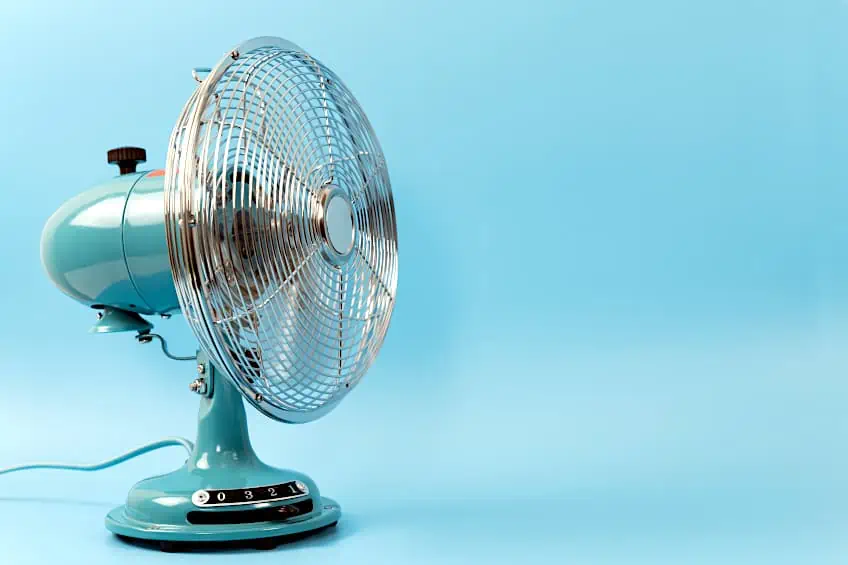
Naturally, you should avoid inhalation and ingestion too and you should seek medical attention if symptoms such as irritation to the mucous membranes persist. Nevertheless, PVA glue is generally safe as children are familiar with using it for crafts and so on.
Now that you have a clear understanding of what PVA glue is, you will be able to use and store this handy product with no issues. Furthermore, you will also be able to exercise the necessary caution that is needed when using this type of glue. PVA glue is incredibly versatile and you will find that it can be used on any porous material that can be clamped. While it is not ideal for plastic and metal, you should find more than enough uses for it with your next craft or woodworking project. Good luck!
Frequently Asked Questions
What Is PVA Glue Used For?
PVA glue was designed to be used on porous surfaces. This means that it is not a good idea to use it on glass, plastic, and different types of metal as it will not bond to such smooth surfaces. If you are stuck thinking about what is PVA glue used for, always remember that it will not stick to anything that it cannot penetrate.
Are There Many Types of Glues That Contain PVA?
We would not say that there are many types of glues that contain PVA, but there are a handful of PVA glues available. This includes PVA water-resistant glue, PVA wood glue, and standard PVA glue.
What Does PVA Stand for in Glue?
PVA stands for polyvinyl acetate, and this is the proper term used to describe common adhesives such as wood and white glue. PVA adhesive is among the most common types of adhesives available today and they are commonly used at schools and in various workshops.

I have been into woodworking since 2005 and woodturning since 2011. Because of my love for wood and woodworking, I started woodhappen.com to teach other enthusiasts about how to finish and seal wood, the best woodworking tools, the different types of wood, and everything else related to woodworking! Read more about me here.

